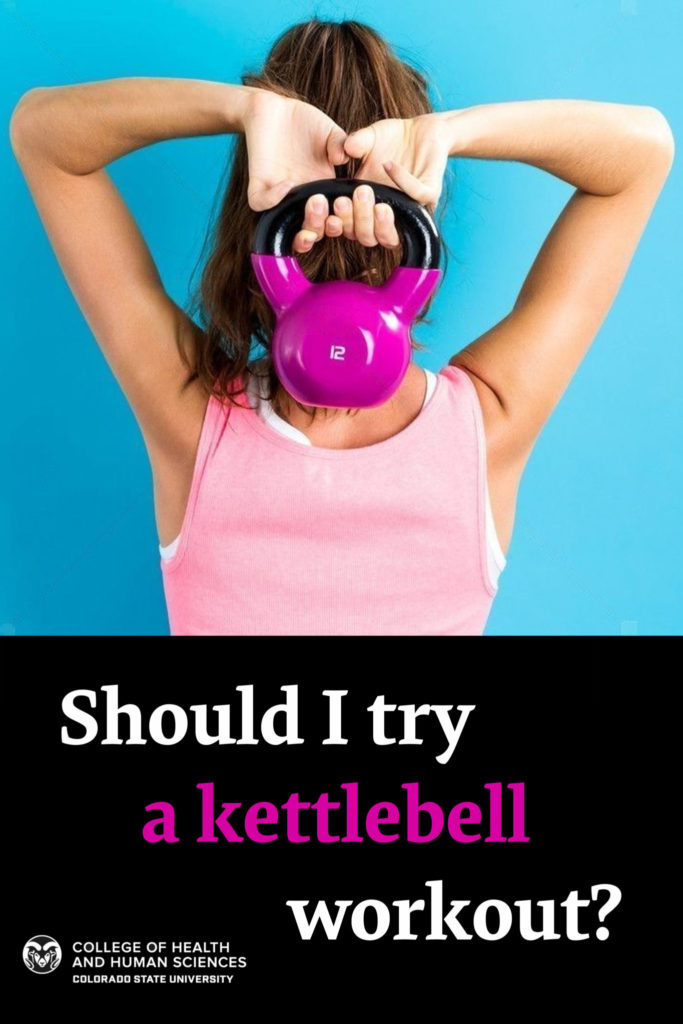 Kettlebell weights are cast iron weights with a ball form on the bottom and a handle on top that can be found in almost any size you want. The kettlebell shape allows for more dynamic lifts that can challenge heart rate and strength in a different way than you might be used to with traditional strength training. If new to using the kettlebell, there is some important initial training for safety, but it can be a great addition to your program and a way to add some variety to your routine.
Kettlebell weights are cast iron weights with a ball form on the bottom and a handle on top that can be found in almost any size you want. The kettlebell shape allows for more dynamic lifts that can challenge heart rate and strength in a different way than you might be used to with traditional strength training. If new to using the kettlebell, there is some important initial training for safety, but it can be a great addition to your program and a way to add some variety to your routine.
Some enjoy the kettlebell because it’s a single piece of equipment that you can challenge multiple muscle groups at the same time. The difference, compared to standard free weights, is that the kettlebell allows for more momentum, requiring more stabilization from the core, can add alterations in the center of gravity, and can work to build both endurance and power. Muscle endurance is our ability to perform continual contractions for an extended period of time, while muscle power is our ability to perform contractions based on a unit of time, so how fast or explosive you can be with your contractions.
Further research is needed to assess the improvements in muscle endurance and power for multiple populations using the kettlebell. However, there has been evidence to support that kettlebells can be an affordable and accessible way to strength train (1). As a piece of equipment often meant for strength, kettlebell training also saw improvements in VO2 max scores, a measure of our cardiorespiratory fitness and our ability to utilize oxygen efficiently (1).
Due to the learning curve of use, and the importance of safety, the kettlebell might not be a beginner piece of equipment. With highly trained populations like athlete kettlebell training, there has been shown to be a use for kettlebells in rehab settings to work on mobility, and stability, along with conditioning of endurance athletes, and explosive movements in power athletes (2). For those of us non-athletes, kettlebells can be a great way to experience variety in our strength training.
If interested, and willing to take the initial steps to learn good form and movement mechanics, the kettlebell can help to simplify your training, add cardio to your strength program, increase your range of motion, help with muscle imbalances, and you might find it fun.
Sources:
- Vancini RL, Andrade MS, Rufo-Tavares W, Zimerer C, Nikolaidis PT, de Lira CAB. Kettlebell Exercise as an Alternative to Improve Aerobic Power and Muscle Strength. J Hum Kinet. 2019 Mar 27;66:5-6. doi: 10.2478/hukin-2018-0062. PMID: 30988835; PMCID: PMC6458586.
- Beardsley, Chris MA (Hons)1; Contreras, Bret MA2. The Role of Kettlebells in Strength and Conditioning: A Review of the Literature. Strength and Conditioning Journal: June 2014 – Volume 36 – Issue 3 – p 64-70 doi: 10.1519/SSC.0000000000000048
Kimberly Burke is a lecturer in the Department of Health and Exercise Science and the director of the Adult Fitness Program at Colorado State University. Adult Fitness offers exercise opportunities for employees of CSU as well as community members while providing hands-on learning experiences for health promotion students. To learn more, see the Adult Fitness Program website